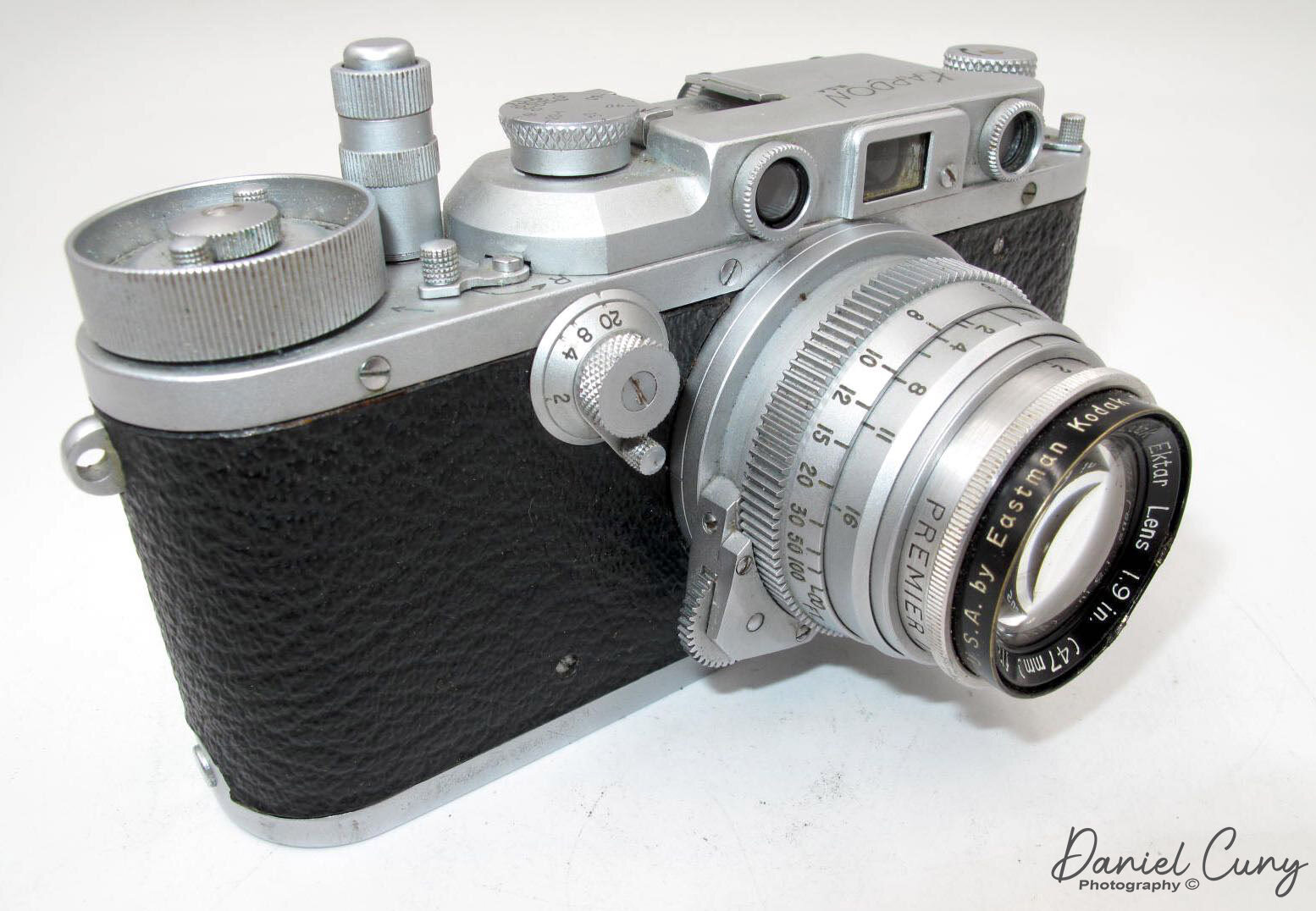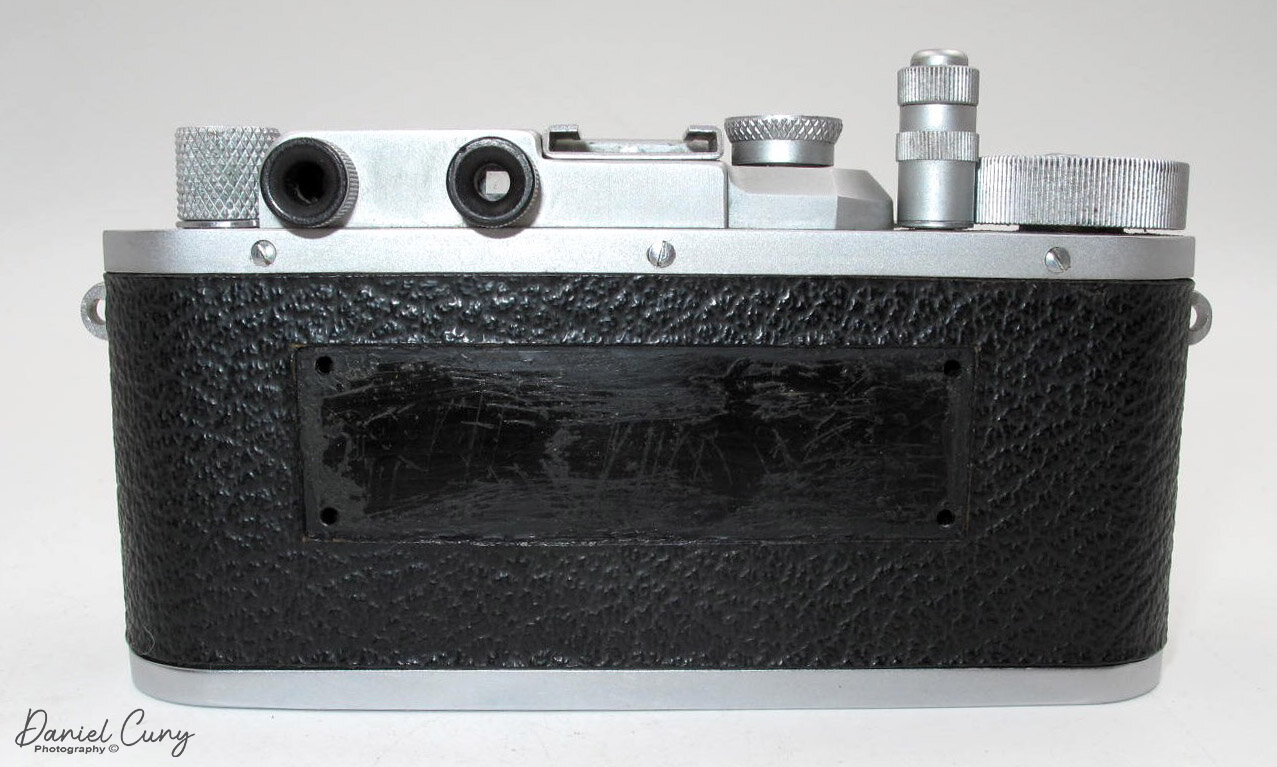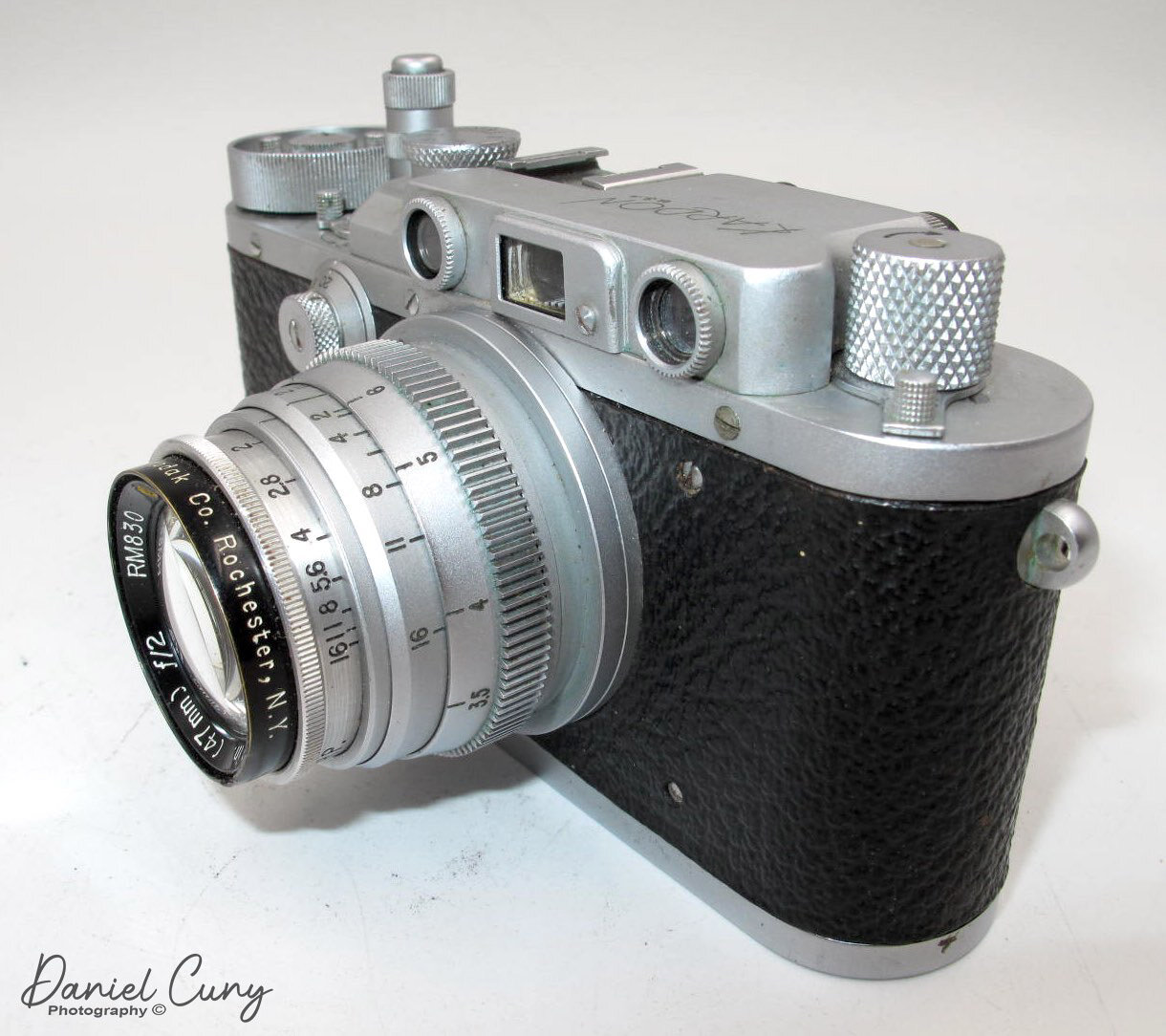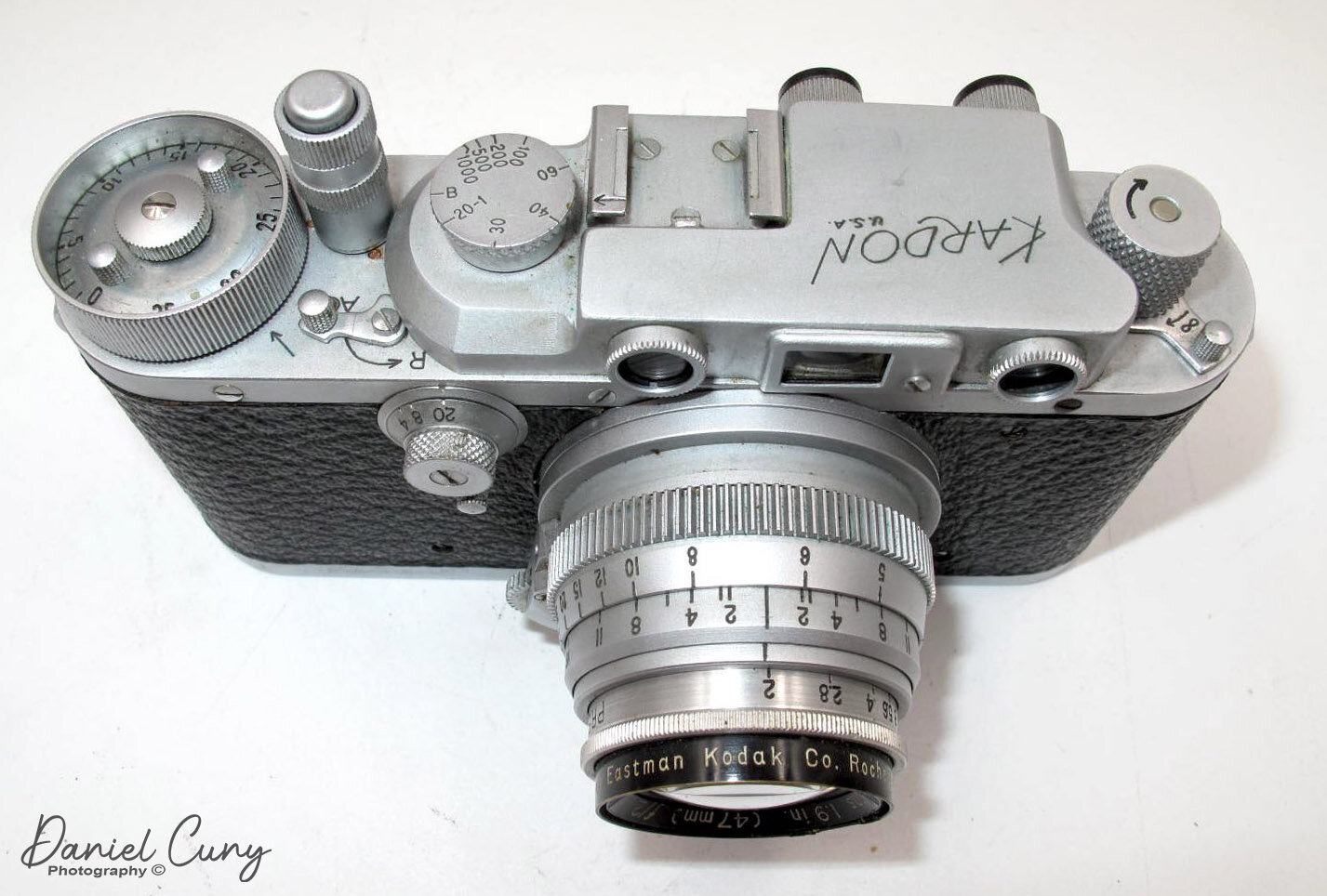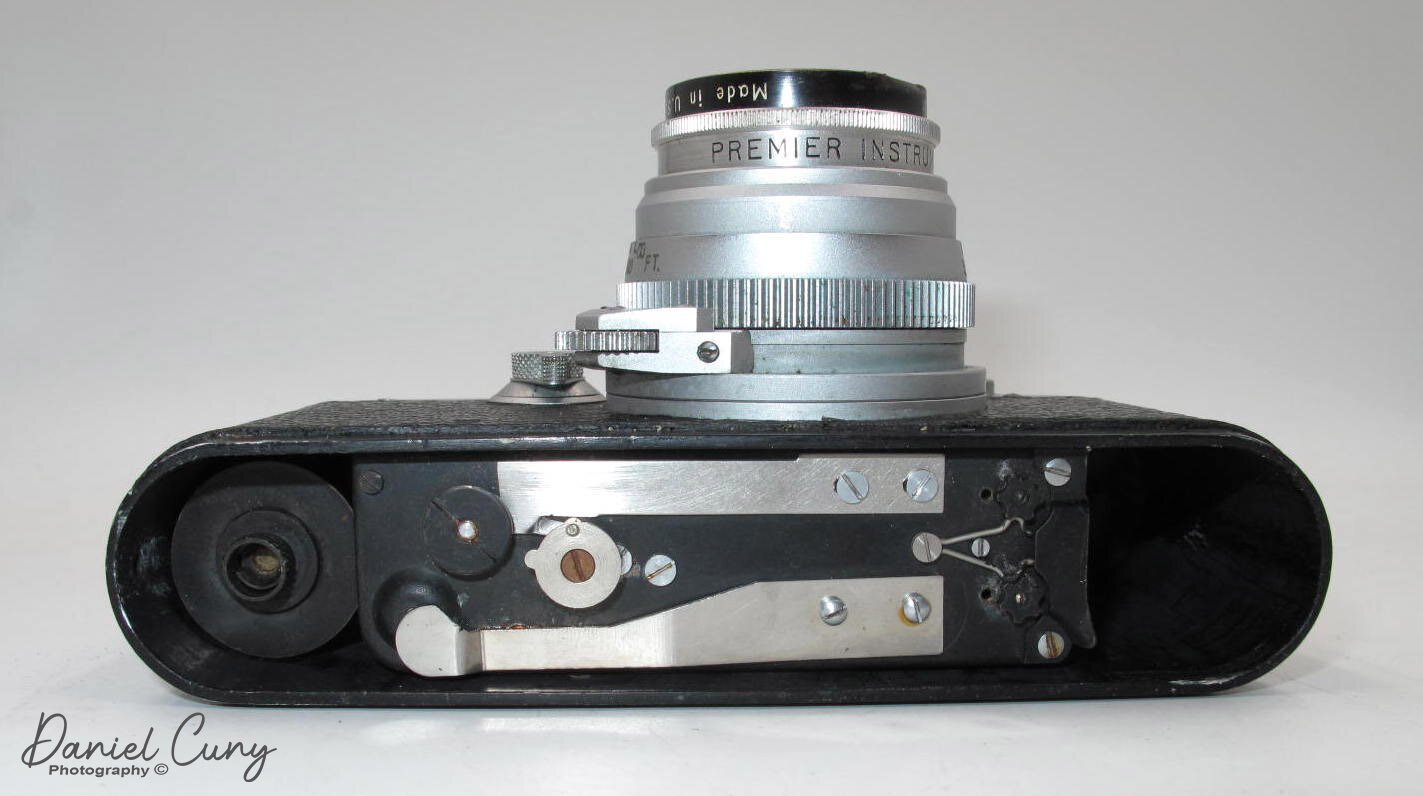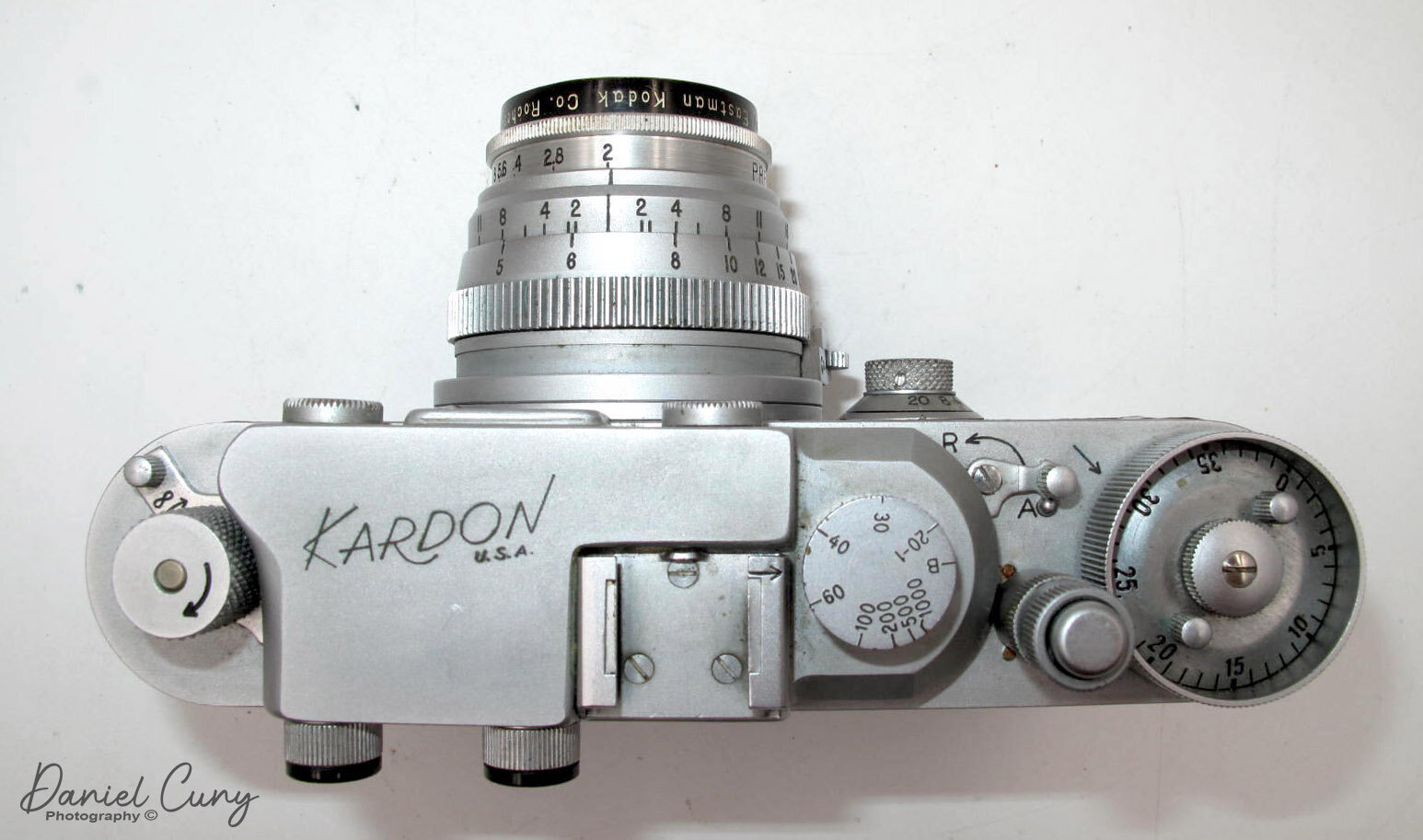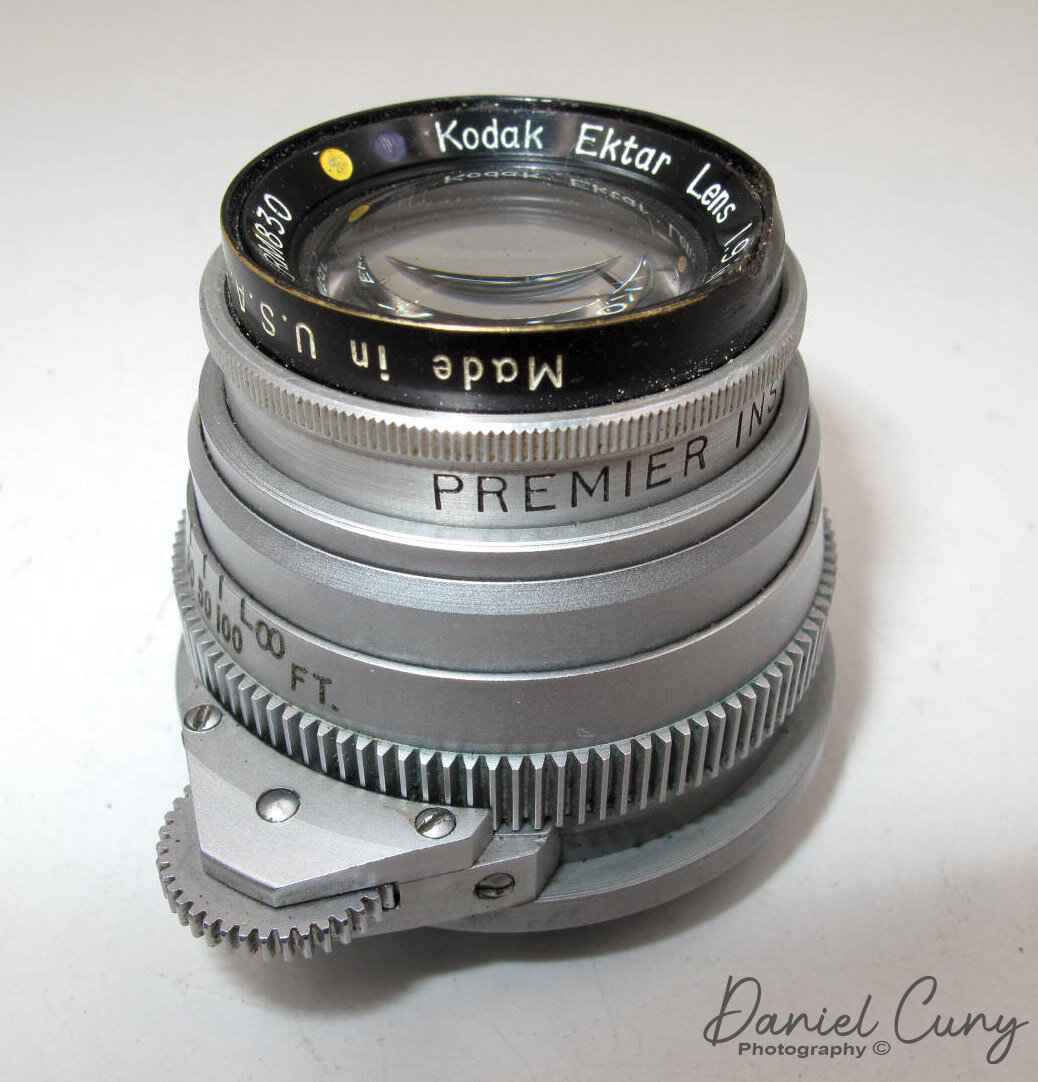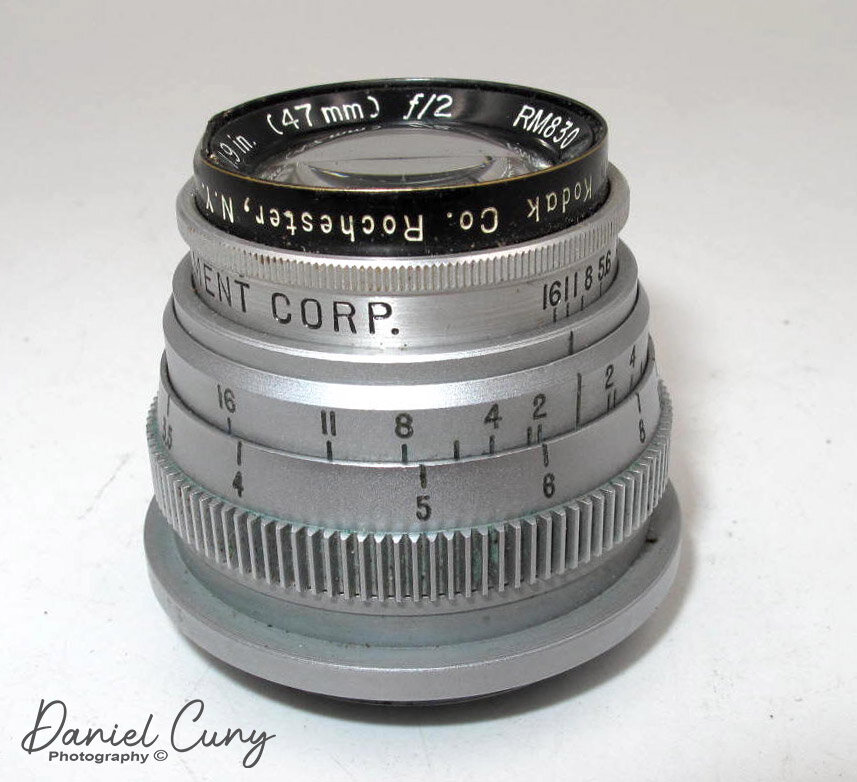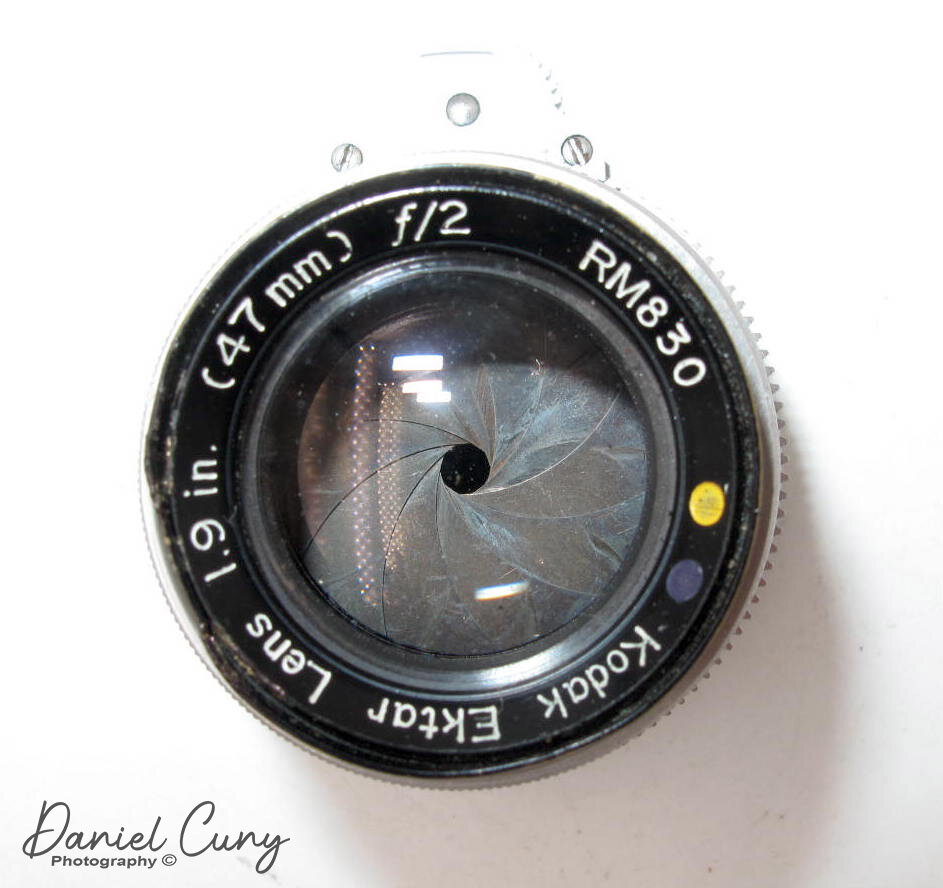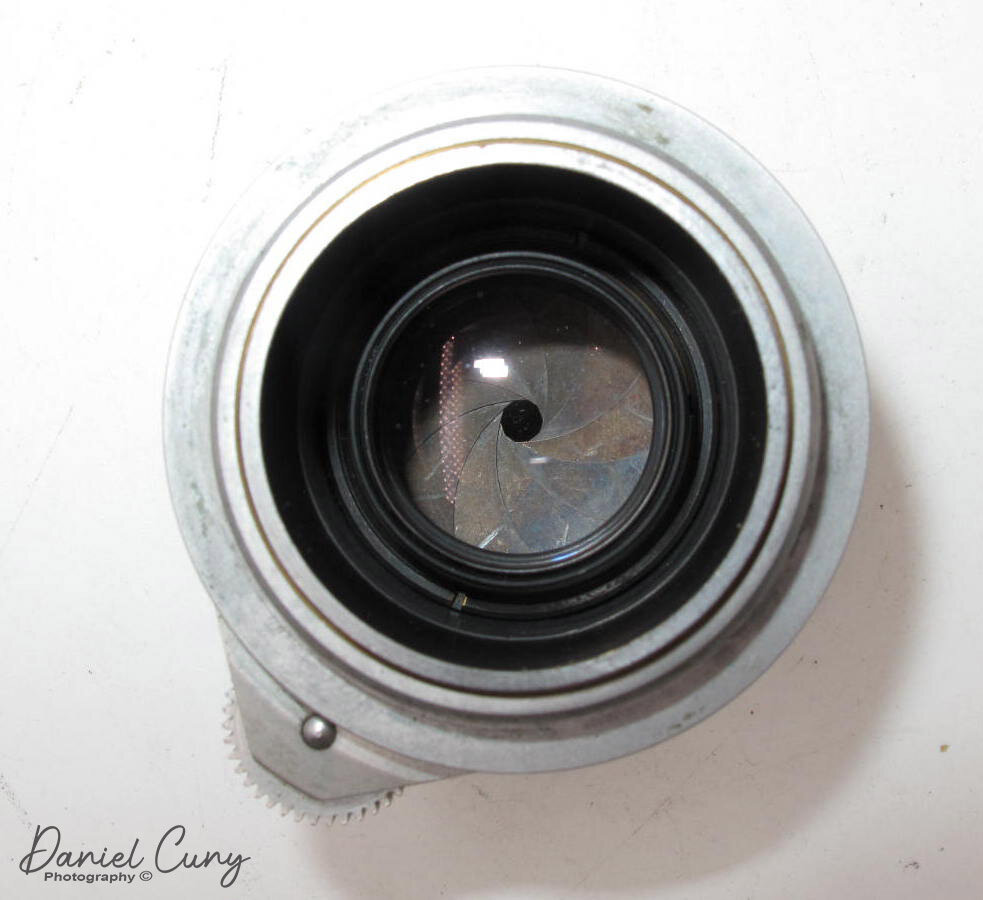The Kardon camera is one of the rarer 35mm cameras to have in your collection. As far as a rarity in cameras goes, it's on par with the Kodak Super Six-20, The Bell & Howell Foton, and a few others because they were in limited production. The Kardon has a pretty exciting and involved story, much better told by Dean and Sandy Ritz. There is also a great book, and almost as difficult to find as the camera, The Kardon Camera Story by Jerome Katz, 1975.
Kardon camera & Case
The short version of the Kardon story is at the beginning of WWII. The U.S. government took control of the New York branch of the German E. Leitz company and wanted to build a camera similar to the Leica IIIa. Unfortunately, it wasn't available to the government due to the war. They figured they had the machinery at the E. Leitz branch, but by 1943 they determined the production machinery to manufacture the cameras wasn't in good working condition and unrepairable.
During this time, Russian-Immigrant and President of Premier Instrument Corporation, Peter Kardon comes into the picture. In a way to help the war effort, they took on the task of redesigning the Leica IIIa and came up with the Kardon camera for the U.S. government. The cameras came with the extremely sharp Kodak 47mm f2.0 Ektar lens and were known as the "American Leica." The cameras were initially being made for The Signal Corp. and delivered in 1945. Shortly after the war had ended, the government canceled the contract for the remaining cameras on order. The original cameras have a plate on the back with Signal Corps, U.S. Army, PH-628/UF, and the serial number. To sell the cameras to the public, they made a short run of cameras without the plate and the serial number on the top plate of the camera. Due to the very high price of the camera, which was just under $400 at the time, It's my understanding there were less than 2000 cameras made. The Kardon camera was a technical triumph, but a financial disaster.
The camera I have is missing the back nameplate, and there are holes in the back where the plate is attached with chrome studs, I've not shot with the camera. Also, on the lens, the outer ring is dented slightly and needs to be straightened. It looks like someone tried and failed, but that's OK because I bought it for a very reasonable price and always wanted one for my collection.
The Kardon Camera is an exceptionally well designed and masterfully made camera. The camera measures 8" wide x 6" tall x 6" deep with the lens., and weighs 3 lbs. The loading of the film is very similar to any Leica film camera. The camera comes with the pull-out take-up spool and the removable bottom plate. On top of the camera, the film advance wheel is much larger and more comfortable to advance. Inside the film advance, is the frame counter with two protruding knobs to turn to set. The shutter speed dial on the top ranges from 1/1000-1/20-1, and "B" The slow shutter speed dial on the front of the camera ranges from 1/20-1 sec. The rangefinder on the camera is bright to view and easy to focus. Next to the rangefinder, is the optical viewfinder.
On the Signal Corp camera, they came with a removable extended shutter release, which sticks up much higher. The personal Kardon camera didn't come with the extended shutter release. The standard Kodak 47mm f2 Ektar lens is mounted in a premier focusing mount with a knurled wheel on the outside to make it easier to focus. The fitted camera case is a lovely brown leather and excellent stitching to hold it together under extreme conditions. I always enjoy playing with this camera and only wish it would have been around for a while longer, as I believe it's one of the best-made cameras I own. Come to think of it. I'm going to cover up the holes on the back of the camera and take it for a spin this week. I'll report back on the images I took from it.
If you have questions or comments about this or any other camera posting, I'd love to hear from you. For now, until next week, please be safe.
Next week's blog post will be on Robot Luftwaffen Eigentum camera from my collection.
You can subscribe to my Camera Collecting Blog below.


